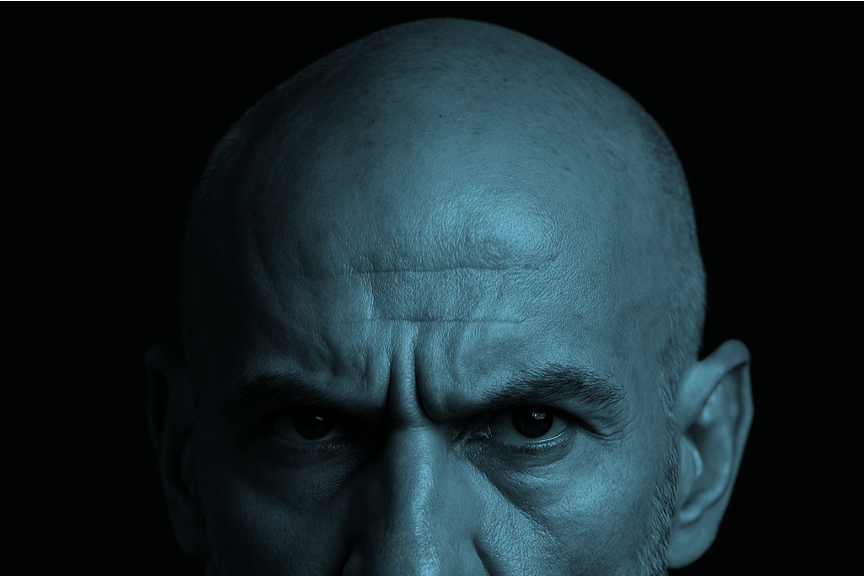“Your brain is your operating system. Every decision, negotiation, and strategic leap depends on how well it runs.”
The Invisible Asset: Why Brain Health Defines Leadership
Most executives track financial capital, social capital, and even emotional capital—but few manage their cognitive capital.
In an era of information overload and relentless decision pressure, brain health is becoming the defining edge of leadership performance. McKinsey’s The New Case for Brain Health notes that global productivity losses linked to poor cognitive health are estimated in the trillions of dollars annually, with leaders among the most exposed populations.
When your mind is the business, fatigue becomes a balance-sheet liability.
This article—Part 2 of the Beyond Grit series—dives into the science and strategy of protecting the brain behind every executive decision.
Cognitive Load: The Silent Performance Tax
Modern leaders operate in a constant state of cognitive surplus—too much information, too little clarity.
Deloitte’s The Workforce Well-Being Imperative found that 80% of executives report decision fatigue at least once a week, yet only 15% have formal recovery practices built into their routines.
The brain, much like a high-performance processor, overheats under sustained load.
Symptoms appear as short temper, indecision, or reactive leadership—but the root cause is neurological depletion.
The shift required isn’t more willpower; it’s mental load management.
The best leaders know that their cognitive bandwidth is finite—and they design around it.
Great strategy requires a calm brain, not a crowded one.
The Executive Mindset Stack: Mental Fitness as Infrastructure
To operate at elite levels, CEOs must treat mental fitness as infrastructure—a system to protect clarity, emotional regulation, and creativity.
Think of it as a 3-layer “Executive Mindset Stack”:
- Neural Health (The Hardware)
- The biological foundation: sleep, hydration, nutrition, and oxygenation.
- Cognitive performance drops up to 30% after a single night of poor sleep (McKinsey, Investing in the Future).
- Simple rule: guard your REM as you guard your revenue.
- Cognitive Practices (The Software)
- This layer builds focus and awareness.
- Practices like journaling, meditation, or “pre-decision resets” help leaders slow cognitive cycles before critical choices.
- One Deloitte study found that leaders who regularly engage in reflective mental habits demonstrate up to 60% greater decision satisfaction post-event.
- Environmental Design (The Firewall)
- Leaders can’t outthink chaos—they must design it out.
- Reduce decision noise: structured agendas, fewer context switches, and purposeful meeting cadences preserve attention.
- This is how top-performing CEOs reclaim focus as a resource.
Cognitive Recovery: Sharpening Focus, Not Losing It
Mental fatigue isn’t solved by rest alone—it’s solved by recovery with intent.
McKinsey’s Investing in the Future report emphasizes that targeted mental health interventions (such as mindfulness, structured downtime, or creative hobbies) yield 12–15% productivity improvements within leadership populations.
The modern executive must adopt recovery as a strategic protocol, not a reactive fix.
A few proven cognitive recovery levers:
- Focused Disengagement: short “white-space” windows—15 minutes between major meetings to reset context and reduce neural interference.
- Digital Sabbath: structured periods (even a few hours per week) with zero screen exposure to allow the prefrontal cortex to cool.
- Bilateral Stimulation: activities like walking, rhythmic exercise, or journaling that integrate hemispheric activity and reduce anxiety loops.
- Cognitive Nutrition: Omega-3s, hydration, and glucose stability directly affect prefrontal function and decision precision.
The smartest leaders aren’t the ones always on—they’re the ones who know when to switch off.
The Cognitive CEO Checklist
To close, a few strategic prompts for your next self-audit:
- Do I treat mental clarity as a strategic asset or a personal trait?
- Have I built recovery windows into my week—or just crash points?
- Would my team describe me as decisive and clear or driven and distracted?
- Do I consume information intentionally—or let it consume me?
In today’s economy of overthinking, the advantage isn’t intelligence—it’s mental clarity.
And that clarity only comes when leaders protect their brain’s performance capacity as fiercely as they protect cash flow.
Closing: Brain Health as Strategic Capital
The future of leadership belongs to those who can think clearly under pressure—not just endure it.
That means the next frontier of executive performance isn’t more information; it’s better cognition.
Because in the modern C-suite, clarity is currency.
Notice
I’m not a medical professional. The insights in this series are drawn from my experience advising 1,000+ senior leaders—and observing firsthand how those who invest in mental and physical health consistently outperform. Always consult a qualified healthcare provider for personal care, diagnosis, or treatment.
Sam Palazzolo
Real Strategies. Real Results.
Next: Leader Longevity: Health Moves That Outlast Quarters — Part 3 of the Beyond Grit Series.
